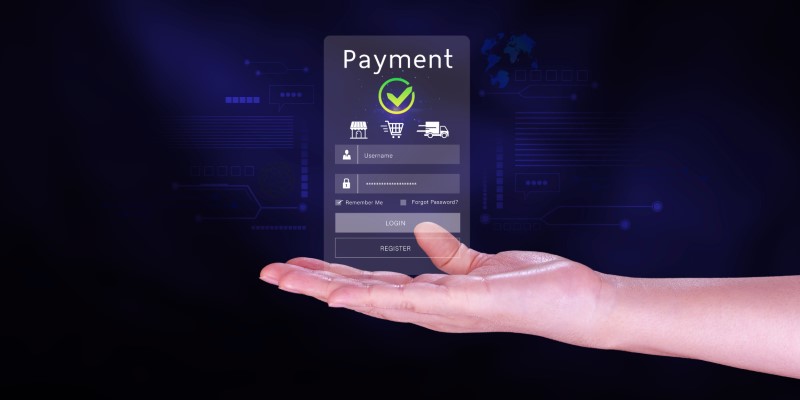What’s Behind The Rise Of Digital Payment Systems?
In recent years, digital payment systems have surged in popularity, reshaping how individuals and businesses handle transactions. From everyday purchases to large-scale financial operations, digital payments offer convenience and efficiency that traditional methods struggle to match. This transformation is not merely a trend but a fundamental shift driven by various technological, economic, and social factors.
The Evolution Of Payment Methods: From Cash To Digital
As societies have grown and economies have become more complex, the methods we use to exchange value have continuously adapted to meet changing needs and leverage new technologies. From the simplicity of bartering goods directly to the intricate digital transactions of today, each phase in the evolution of payment systems reflects broader shifts in culture, technology, and commerce.

Early Forms Of Trade And Barter
The history of payment methods dates back to barter systems, where goods and services were directly exchanged without a standardized medium. While effective in small communities, barter systems were limited by the need for a double coincidence of wants.
Introduction Of Commodity Money
To overcome the limitations of barter, societies introduced commodity money—items like gold, silver, and other valuable materials that could be universally accepted. This innovation simplified transactions and laid the groundwork for more sophisticated financial systems.
Emergence Of Paper Money And Banking
The transition from commodity money to paper currency marked a significant advancement in financial transactions. Banks began to play a crucial role in safeguarding money, issuing loans, and facilitating trade. This period saw the establishment of formal financial institutions, which became the backbone of modern economies.
Digital Payment Systems Take Center Stage
The late 20th and early 21st centuries witnessed the advent of digital payment systems. Technologies such as credit cards, online banking, and mobile payments have revolutionized how money is exchanged. Digital payments dominate today's financial landscape, offering unparalleled speed, security, and accessibility.
The journey from barter to digital payments illustrates the continuous quest for more efficient and reliable transaction methods. Each stage of this evolution has built upon previous innovations, leading to the sophisticated digital payment systems we rely on today.

Key Drivers Fueling The Growth Of Digital Payment Systems
Multiple factors are propelling the rise of digital payment systems, which cater to the evolving needs of consumers and businesses alike.
Increasing Smartphone Penetration
The widespread adoption of smartphones has been a crucial catalyst for digital payments. With powerful devices, consumers can manage transactions effortlessly through various apps and platforms. This accessibility has democratized financial services, making them available to a broader audience.
Enhanced Internet Connectivity
Reliable and fast internet connections are essential for the seamless operation of digital payment systems. Improvements in global internet infrastructure have enabled real-time transactions, reducing delays and enhancing user experience. This connectivity also supports integrating advanced technologies like cloud computing and artificial intelligence.
Changing Consumer Preferences
Modern consumers prioritize convenience and speed in their financial interactions. Digital payment systems cater to these preferences by offering instant transactions, easy access to transaction history, and the ability to make payments from virtually anywhere. Additionally, the shift towards online shopping has further accelerated the adoption of digital payment methods.
Regulatory Support And Financial Inclusion
Governments and financial institutions have recognized the potential of digital payments to enhance financial inclusion. Policies and regulations that support the development and adoption of digital payment systems have created a conducive environment for their growth. Initiatives aimed at providing financial services to underserved populations have also driven the expansion of digital payment infrastructure.

The Role Of Technology In Transforming Financial Transactions
Technology is at the heart of the transformation in financial transactions, enabling the development and enhancement of digital payment systems.
Mobile Wallets And Contactless Payments
Mobile wallets like Apple Pay, Google Wallet, and Samsung Pay have revolutionized how consumers make payments. By storing payment information securely on smartphones, these wallets allow for quick and contactless transactions, enhancing convenience and reducing the need for physical cash or cards.
Blockchain And Cryptocurrencies
Blockchain technology has introduced a new paradigm in digital payments by providing a decentralized and secure ledger system. Cryptocurrencies like Bitcoin and Ethereum leverage blockchain to enable peer-to-peer transactions without intermediaries. This innovation increases transaction speed, reduces costs, and enhances transparency.
Artificial Intelligence And Machine Learning
Artificial intelligence (AI) and machine learning (ML) transform digital payments by enabling more innovative fraud detection, personalized financial services, and improved customer experiences. AI algorithms analyze vast amounts of transaction data to identify real-time suspicious activities, enhancing security. Additionally, ML models can predict consumer behaviour, allowing for tailored financial products and services.

The Future Outlook: What Lies Ahead For Digital Payments?
The future of digital payment systems is poised for continued growth and transformation, driven by emerging technologies and evolving consumer needs.
Integration Of Artificial Intelligence
Artificial intelligence will play an increasingly prominent role in digital payments, enhancing personalization, fraud detection, and customer service. AI-driven chatbots and virtual assistants can provide real-time support, while predictive analytics can offer tailored financial recommendations to users.
Expansion Of Blockchain Applications
Blockchain technology will find broader applications in digital payments beyond cryptocurrencies. Smart contracts and decentralized finance (DeFi) platforms will enable more secure and transparent transactions, reducing reliance on traditional financial intermediaries and fostering greater user trust.
Rise Of Biometric Authentication
Biometric technologies such as fingerprint scanning, facial recognition, and voice authentication will become standard features in digital payment systems. These methods offer enhanced security and a seamless user experience, minimizing the need for traditional passwords and PINs.
Growth Of Internet Of Things Payments
As IoT devices become more prevalent, their integration with digital payment systems will facilitate automated and frictionless transactions. From smart refrigerators that reorder groceries to connected cars that pay for tolls automatically, IoT payments will streamline everyday financial interactions.

Conclusion
Central banks worldwide are exploring the issuance of digital currencies, which could revolutionize the financial landscape. Central Bank Digital Currencies (CBDCs) would provide a state-backed alternative to cryptocurrencies, offering the benefits of digital payments while ensuring regulatory oversight and stability.
The future of digital payment systems is bright, with numerous advancements on the horizon that promise to enhance their functionality, security, and accessibility. As technology evolves and consumer expectations shift, digital payments will become increasingly integral in the global economy, driving innovation and fostering a more connected and efficient financial ecosystem.





